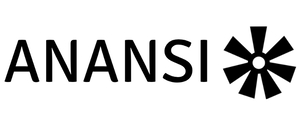A Node.js web spider for site search. Inspired by the deprecated https://github.com/algolia/docsearch-scraper NOTE: The project is in a very early stage.
Anansi lets you crawl your website, scrape content that matches html selectors you specified in a config file, then index them in a search engine (currently supports Algolia as well as your own custom search plugin) to serve your site search features.
Under the hood, the project uses puppeteer-cluster, which in turn uses puppeteer
npm
npm install --save puppeteer # the project uses puppeteer-cluster and puppeteer under the hood
npm install --save puppeteer-cluster # the project uses puppeteer-cluster and puppeteer under the hood
npm install --save anansi-jsyarn
yarn add puppeteer puppeteer-cluster anansi-jsimport { crawlSite } from 'anansi-js';
const letsStartCrawling = async () => {
await crawlSite({
configFilePath: 'path/to/your/config.json',
searchEngineOpts: {
algolia: {
apiKey: '<your algolia API key>',
appId: '<your algolia app ID>',
indexName: '<your algolia index name>'
}
},
diagnostics: true,
logLevel: 'debug',
maxIndexedRecords: 300
});
}
letsStartCrawling().then(() => {
process.exit(0);
})instantiates a Spider object, initializing it based on your config file and settings, then invoking its crawl method.
| Property | Required | Type | Description |
|---|---|---|---|
configFilePath |
N | string | the path to your config json file (see sample config: https://github.com/anansi-js/anansi/blob/main/config.sample.json or reference) |
config |
N | CrawlSiteOptionsCrawlerConfig | alternatively to passing a config file path, can pass the config file's properties here |
searchEngineOpts |
N | SearchEngineOpts | search engine settings |
logLevel |
N | "debug" / "warn" / "error" |
log level |
diagnostics |
N | boolean | whether or not to output diagnostics |
diagnosticsFilePath |
N | string | path to the file where diagnostics will be written to |
timeout |
N | number | timeout in ms |
maxIndexedRecords |
N | number | maximum number of records to index. If reached, the crawling jobs will terminate |
maxIndexedPages |
N | number | maximum number of pages to index. If reached, the crawling jobs will terminate |
| Property | Required | Type | Description |
|---|---|---|---|
startUrls |
Y | string / string[] | list of urls that the crawler will start from |
scraperSettings |
Y | ScraperSettings | html selectors for telling the crawler which content to scrape for indexing |
allowedDomains |
N | string / string[] | list of allowed domains. When not specified, defaults to the domains of your startUrls |
ignoreUrls |
N | string / string[] | list of url patterns to ignore |
maxConcurrency |
N | number | maximum concurrent puppeteer clusters to run |
all of the scraper settings groups (each group except the default ties to a specific URL pattern)
| Property | Required | Type | Description |
|---|---|---|---|
default |
Y | ScraperPageSettings | default scraper page settings - will be applied when the scraped url doesn't match any other scraper page settings group |
[your scraper page-level settings group name] |
N | ScraperPageSettings | page-level settings group. Can add as many as you want. Each group will be applied to a given url pattern. During crawling, the settings for each page will be chosen based on which group's urlPatten field matches the page url. The default one will be chosen if no match was found |
shared |
Y | ScraperPageSettings | shared scraper settings - settings defined here will be applied for all pages unless there is an overriding setting in the default or the specific settings group that is matches the current page |
A group of a scraper settings - mostly hierarchy and metadata selectors, grouped by a specific URL pattern
| Property | Required | Type | Description |
|---|---|---|---|
hierarchySelectors |
Y | HierarchySelectors | selectors hierarchy (see below) |
metadataSelectors |
Y | Record<string, string> | metadata selectors. Mapping from html selectors to custom additional fields in the index, e.g. can scrape meta tags of a certain content pattern and store under a custom field |
urlPattern |
Y | string | URL pattern. During crawling, the settings group for each page will be chosen based on which group's urlPatten field matches the page url. The default one will be chosen if no match was found |
pageRank |
N | number | custom ranking for the matched pages. Defaults to 0 |
respectRobotsMeta |
N | boolean | whether or not the crawler should respect noindex meta tag. Defaults to false |
excludeSelectors |
N | string[] | list of html selectors to exclude from being scraped |
userAgent |
N | string | custom user agent to set when running puppeteer |
headers |
N | Record<string, string> | request headers to include when crawling the site |
basicAuth |
N | { user: string; password: string } | basic auth credentials |
hierarchy selectors. Essentially a mapping from html selectors to indexed hierarchy levels
| Property | Required | Type | Description |
|---|---|---|---|
l0 |
N | string | HTML selectors for matching l0, e.g. "span[class='myclass'], .myclass2" |
l1 |
N | string | HTML selectors for matching l1 |
l2 |
N | string | HTML selectors for matching l2 |
l3 |
N | string | HTML selectors for matching l3 |
l4 |
N | string | HTML selectors for matching l4 |
content |
N | string | HTML selectors for matching content |
For detailed information about the way the spider works, visit: https://github.com/anansi-js/anansi/blob/main/docs/under-the-hood.md


